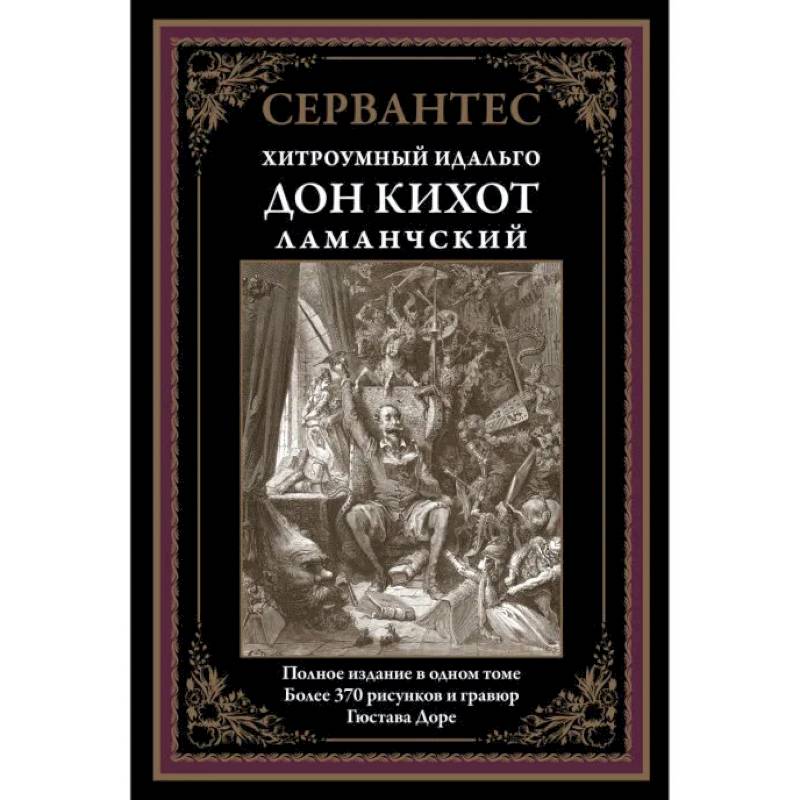Don Quixote
Please sign in so that we can notify you about a reply
Don Quixote was first published at the beginning of the 17th century and immediately gained well -deserved glory. This novel was read out, it was reissued, translated. After twenty years of wandering life and literary experiments, a well -deserved success came to Cervantes. What was his secret? After all, Don Quixote was conceived just as a parody of knightly novels of that time. However, the work of Cervantes grew this task. His novel is rich in both style and content. The Moorish novels, the poems of the Italian Renaissance, and the humor of the Plutov romance, and the romance of the Spanish song ballads and romances were reflected in it. In addition, the comic story of Don Quixote grew into a large -scale picture of folk life in Spain of that time, becoming a kind of universal epic.
The first complete translation of the novel into Russian was performed in 1907 by Maria Valentinovna Watson. Her maiden surname sounded strange for the Russian ear - de Roberti de Castro de la serda. The future translator was born in the family of the Spanish aristocrat, who, at a strange whim, abandoned life into Little Russia. From the province of de Castro moved to St. Petersburg, where in 1865 she graduated from the Smolny Institute of noble girls. Having independently mastered the Italian, English, German, Portuguese and French, then translated a lot. She also wrote her own poems. She knew the language of Cervantes from childhood as a native, and this lies in the success of her translation. He is accurate in terms of meaning, faithful in detail and conveys all the nuances of Cervantes style.
Usually reprints of Roman Cervantes come out with magnificent drawings of Gustav Dorea. This outstanding French illustrator specially traveled to Spain in 1855 to penetrate the local color and personally see the places where the “knight of the sad image” could wander. The book that you picked up is no exception. It is decorated with more than 370 drawings and engravings of Dore.
The famous novel by Miguel de Cervantes Savedra (1547–1616) was first published at the beginning of the 17th century and immediately entered the Golden Fund of World Literature. The first complete translation of the novel into Russian was made in 1907 by Maria Valentinovna Watson (1848–1932) She was the daughter of the Spanish aristocrat de Castro and therefore perfectly understood the language of Cervantes. It is this translation that is given in this edition.
Extraordinary colorfulness and uniqueness are given to it by the magnificent drawings of Gustav Dore (1832–1883), fenced by the French master Eliodor Pizan (1822–1890) The book precedes the biographical essay on the life and work of the great writer
The first complete translation of the novel into Russian was performed in 1907 by Maria Valentinovna Watson. Her maiden surname sounded strange for the Russian ear - de Roberti de Castro de la serda. The future translator was born in the family of the Spanish aristocrat, who, at a strange whim, abandoned life into Little Russia. From the province of de Castro moved to St. Petersburg, where in 1865 she graduated from the Smolny Institute of noble girls. Having independently mastered the Italian, English, German, Portuguese and French, then translated a lot. She also wrote her own poems. She knew the language of Cervantes from childhood as a native, and this lies in the success of her translation. He is accurate in terms of meaning, faithful in detail and conveys all the nuances of Cervantes style.
Usually reprints of Roman Cervantes come out with magnificent drawings of Gustav Dorea. This outstanding French illustrator specially traveled to Spain in 1855 to penetrate the local color and personally see the places where the “knight of the sad image” could wander. The book that you picked up is no exception. It is decorated with more than 370 drawings and engravings of Dore.
The famous novel by Miguel de Cervantes Savedra (1547–1616) was first published at the beginning of the 17th century and immediately entered the Golden Fund of World Literature. The first complete translation of the novel into Russian was made in 1907 by Maria Valentinovna Watson (1848–1932) She was the daughter of the Spanish aristocrat de Castro and therefore perfectly understood the language of Cervantes. It is this translation that is given in this edition.
Extraordinary colorfulness and uniqueness are given to it by the magnificent drawings of Gustav Dore (1832–1883), fenced by the French master Eliodor Pizan (1822–1890) The book precedes the biographical essay on the life and work of the great writer
Author:
Author:Cervantes Miguel de Saadra
Cover:
Cover:Hard
Category:
- Category:Children's Book
- Category:Fiction
- Category:Modern Literature
- Category:Agriculture
- Category:Poetry & Literature
Publication language:
Publication Language:Russian
ISBN:
ISBN:978-5-9603-0638-6
No reviews found
